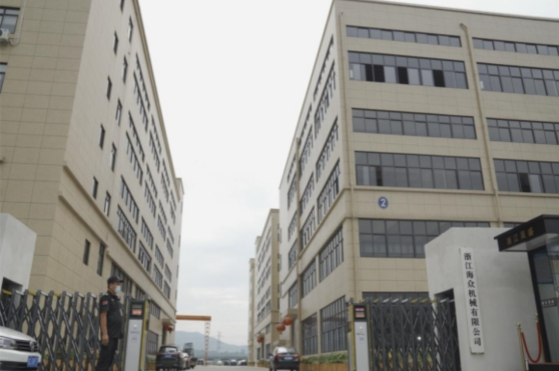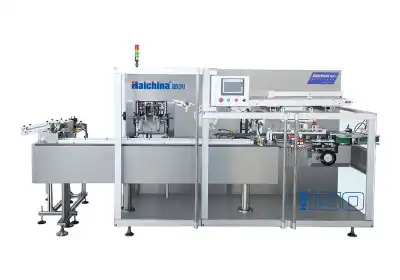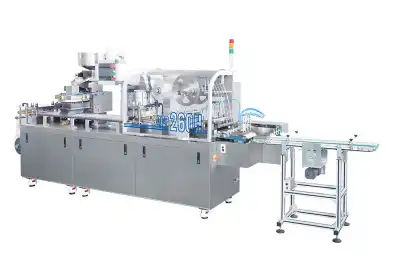Understanding Blister Packaging Technology
The Mechanics of Blister Machines
Blister machines employ a sophisticated process to create individual compartments for each unit of medication. The process begins with thermoforming, where a plastic sheet is heated and molded into cavities. These cavities are then filled with the product, typically tablets or capsules. A backing material, often aluminum foil or plastic, is then heat-sealed to the formed sheet, creating a secure package. This method ensures each dose remains isolated and protected until use.
Materials Used in Blister Packaging
The choice of materials in blister packaging is crucial for maintaining product integrity. Common materials include PVC (Polyvinyl Chloride), PVDC (Polyvinylidene Chloride), and COC (Cyclic Olefin Copolymer) for the forming film. These materials offer varying degrees of moisture and oxygen barrier properties. The lidding material is typically aluminum foil, which provides an excellent barrier against environmental factors. The selection of materials depends on the product's sensitivity to moisture and oxygen, as well as regulatory requirements.
Advantages of Blister Packaging
Blister packaging offers several advantages. It provides excellent product visibility, allowing consumers to see the contents without opening the package. This transparency can enhance consumer confidence and facilitate inventory management. Blister packs also offer superior protection against environmental factors, extending product shelf life. The individual compartments make it easy for patients to track their medication regimen, improving adherence. Additionally, the tamper-evident nature of blister packs enhances product safety and authenticity.
Exploring Strip Pack Machine Technology
How Strip Pack Machines Operate
Strip pack machines utilize a different approach to packaging compared to a blister machine. They create a continuous strip of sealed pouches, each containing a single dose of medication. The process involves feeding two layers of packaging material into the machine. As the materials pass through, they are heat-sealed together, forming individual pockets. The product is then deposited into these pockets before they are sealed. The resulting strip is then cut into individual doses or left as a continuous strip, depending on the desired format.
Materials Utilized in Strip Packaging
Strip packaging typically employs flexible materials such as aluminum foil, paper, or plastic films. These materials are chosen for their ability to form a tight seal and provide adequate protection for the enclosed product. Aluminum foil is commonly used due to its excellent barrier properties against moisture, light, and oxygen. Some strip packs use a combination of materials, such as paper backed with aluminum foil, to balance cost and protection.
Benefits of Strip Pack Machines
Strip pack machines offer several advantages in pharmaceutical packaging. They are highly efficient, capable of producing a large number of doses in a short time. This makes them ideal for high-volume production. Strip packs are also cost-effective, using less material per dose compared to blister packs. They are particularly suitable for packaging powders, granules, and small tablets. The compact nature of strip packs makes them convenient for consumers to carry and store. Additionally, strip packaging can be easily customized with printed information on each dose, enhancing patient information and compliance.
Comparing Blister and Strip Pack Machines: Making the Right Choice
Production Efficiency and Speed
When comparing blister machines and strip pack machines, production efficiency is a crucial factor. Strip pack machines generally offer higher production speeds, making them suitable for large-scale manufacturing. They can produce thousands of doses per minute, significantly outpacing most blister machines. However, blister machines have improved in speed over the years and offer more flexibility in terms of package size and shape. The choice between the two often depends on the production volume and the specific requirements of the product being packaged.
Product Protection and Shelf Life
Both packaging methods offer excellent product protection, but in different ways. Blister packs excel in providing a rigid structure that protects against physical damage. They also offer superior moisture and oxygen barrier properties, especially when using high-barrier films. This makes them ideal for products sensitive to environmental factors. Strip packs, while offering good protection, may be more susceptible to physical damage due to their flexible nature. However, they can be equally effective in protecting against moisture and oxygen when using appropriate materials.
Cost Considerations and Material Usage
Cost is often a deciding factor in choosing between blister and strip pack machines. Strip pack machines generally have lower material costs, as they use less packaging material per dose. This can result in significant savings, especially for high-volume production. Blister machines, while potentially using more material, offer more options for customization and can be more cost-effective for smaller production runs or specialized products. The initial investment in machinery can also vary, with strip pack machines often being less expensive than high-end blister machines.
Conclusion
Choosing between a blister machine and a strip pack machine depends on various factors including product type, production volume, and market preferences. Blister machines offer superior product visibility and protection, making them ideal for solid dosage forms and products requiring enhanced shelf life. Strip pack machines excel in high-speed production and cost-effectiveness, particularly for powders and granules. Consider your specific needs, production scale, and target market when making this crucial decision. Ultimately, both technologies have their place in modern pharmaceutical packaging, each offering unique benefits to manufacturers and consumers alike.
FAQs
What types of products are best suited for blister packaging?
Blister packaging is ideal for solid dosage forms like tablets, capsules, and lozenges, especially those sensitive to moisture or requiring tamper-evident packaging.
Can strip pack machines handle a variety of product sizes?
Yes, strip pack machines are versatile and can handle various product sizes, from fine powders to small tablets, with adjustments to the machine settings.
Which packaging method is more environmentally friendly?
Strip packaging generally uses less material, potentially making it more environmentally friendly. However, blister packs can be designed with recyclable materials, balancing this aspect.
Expert Packaging Solutions | Haichina
At Haichina, we specialize in providing cutting-edge packaging solutions for the pharmaceutical industry. Our range includes both advanced blister machines and efficient strip pack machines, catering to diverse packaging needs. With over 20 years of experience, our CE and cGMP certified equipment ensures high-quality, innovative packaging solutions. Whether you need high-speed production or specialized packaging formats, our expert team can guide you to the perfect solution. Contact our experienced engineers at [email protected] for personalized packaging advice and solutions tailored to your specific requirements.
References
Johnson, M. (2022). Pharmaceutical Packaging Technologies: A Comprehensive Review. Journal of Drug Delivery Science and Technology, 68, 103072.
Smith, A. R., & Brown, L. K. (2021). Comparative Analysis of Blister and Strip Packaging in the Pharmaceutical Industry. International Journal of Pharmaceutics, 592, 120092.
Zhang, Y., et al. (2023). Advancements in Pharmaceutical Packaging Machinery: Blister vs. Strip Pack Machines. Drug Development and Industrial Pharmacy, 49(5), 679-691.
Wilson, D. G. (2020). Environmental Impact Assessment of Pharmaceutical Packaging Methods. Sustainable Chemistry and Pharmacy, 15, 100214.
Patel, R. P., & Patel, M. M. (2022). Patient Compliance and Preference in Pharmaceutical Packaging: A Survey Study. AAPS PharmSciTech, 23(3), 1-10.
Lee, J. H., & Kim, S. Y. (2021). Cost-Effectiveness Analysis of Blister and Strip Packaging in High-Volume Pharmaceutical Production. Journal of Pharmaceutical Innovation, 16(2), 321-330.





